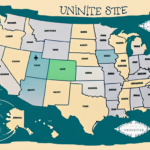Understanding UPS Shipping Rates in Europe
If you are a business owner in Europe, chances are you need to ship products to customers or suppliers regularly. One of the most popular shipping carriers in Europe is UPS. UPS offers a variety of shipping services and rates to fit different business needs. However, understanding how UPS shipping rates work can be challenging, as they depend on several factors. In this article, we will explore the key factors that affect UPS shipping rates in Europe.
Key Factors Influencing UPS Shipping Rates
1. Shipping Distance
The distance between the origin and destination countries significantly impacts UPS shipping rates. Generally, the farther the distance, the higher the shipping cost. Remote or difficult-to-reach locations may incur additional charges due to increased transportation costs.
2. Package Weight and Dimensions
UPS shipping rates are calculated based on both the weight and size of the package. Heavier and larger packages cost more to ship. UPS has strict weight and size limits for each shipping option, and exceeding these limits can result in additional fees. Accurate measurement and weighing of packages are essential to avoid unexpected costs.
3. Value of Goods and Insurance
The declared value of the goods being shipped affects the shipping rates. If you require insurance for your shipment, UPS provides additional insurance services at an extra cost. Insuring high-value items can protect your business against potential losses during transit.
4. Selected Shipping Service
UPS offers various shipping services in Europe, ranging from express delivery to standard ground shipping. Each service comes with different rates and delivery times. Selecting the appropriate service based on your business needs is crucial for cost management and timely deliveries.
5. Fuel Surcharge
A fuel surcharge is added to UPS shipping rates to compensate for fluctuations in fuel prices. This surcharge is calculated based on the current market fuel price index at the time of shipment and can vary weekly. Monitoring fuel surcharge trends can help in budgeting shipping expenses more accurately.
Additional Factors Impacting Shipping Rates
Type of Goods
The nature of the goods being shipped can influence UPS rates. Hazardous materials, fragile items, and oversized packages require special handling and packaging, leading to higher shipping costs. Ensuring compliance with shipping regulations for specific goods is essential to avoid delays and additional charges.
Seasonal Demand
Shipping rates can fluctuate during peak seasons, such as holidays or special events, due to increased demand. Planning shipments in advance and avoiding peak times can help businesses save on shipping costs.
Calculating UPS Shipping Rates
Using UPS Online Shipping Calculator
Calculating UPS shipping rates in Europe is straightforward with UPS’s online shipping calculator. By entering the shipping country, destination country, package weight and dimensions, and the value of the goods, businesses can obtain a list of shipping options and corresponding rates tailored to their needs. This tool also provides real-time tracking information, enabling businesses to monitor their shipments effectively.
Factors Considered in Rate Calculation
The UPS shipping calculator considers various factors, including package weight, dimensions, destination, and selected shipping service. By inputting accurate information, businesses can compare different shipping options to choose the most cost-effective solution.
Strategies for Reducing UPS Shipping Costs
1. Optimize Packaging
- Use the right size packaging to avoid dimensional weight charges.
- Reuse packaging materials where possible to save on supplies.
2. Choose Economical Shipping Services
Select slower shipping options when time is not critical. Standard ground shipping is typically cheaper than express services and can significantly reduce shipping expenses.
3. Consolidate Shipments
Combine multiple packages into a single shipment to benefit from bulk shipping rates. This approach can lead to substantial savings, especially for businesses shipping large volumes.
4. Negotiate Rates with UPS
Businesses that ship high volumes can negotiate better rates with UPS. Contacting UPS sales representatives to discuss shipping needs can result in volume discounts and more favorable terms.
5. Utilize Third-Party Logistics Providers (3PL)
Partnering with a 3PL can help manage shipping needs more efficiently. 3PLs often have negotiated rates with carriers like UPS and can provide additional services such as warehousing and inventory management, further reducing costs.
Avoiding Common Shipping Mistakes
- Accurate Weight Measurements: Ensure packages are weighed correctly to avoid unexpected additional charges.
- Proper Service Selection: Choose the appropriate shipping service that matches your delivery time and budget requirements.
- Complete Shipping Information: Provide accurate sender and receiver details to prevent delivery delays.
- Compliance with Packaging Guidelines: Follow UPS’s packaging guidelines to protect goods and avoid damages during transit.
- Awareness of Customs Regulations: Understand and comply with customs regulations for international shipments to prevent clearance issues.
Comparing UPS with Other Major Carriers
While UPS is a leading shipping carrier in Europe, it's essential to compare its rates and services with other major carriers like FedEx, DHL, and TNT. Each carrier offers unique strengths and services, and comparing them can help businesses select the most suitable and cost-effective option for their shipping needs.
Navigating Customs and Duties for International Shipments
International UPS shipments in Europe require customs clearance, and each country has its own regulations. Understanding these regulations is crucial to ensure smooth delivery. International shipments may also incur duties and taxes payable by the receiver. Utilizing UPS’s customs brokerage services can streamline the clearance process, ensuring compliance and reducing the risk of delays.
Best Practices for Packaging and Labeling
Proper packaging and labeling are vital for safe and timely delivery of UPS shipments in Europe. Adhering to UPS’s packaging guidelines helps prevent damages and avoid delivery delays. Packages should be sturdy and labeled clearly with sender and receiver information, package dimensions, weight, and the selected shipping service. Attention to detail in packaging and labeling ensures a successful shipping experience.
Tracking Your UPS Shipments Across Europe
UPS offers a comprehensive tracking service that allows businesses to monitor their shipments across multiple European countries in real-time. By entering the provided tracking number into UPS’s online tracking system, businesses can receive status updates and delivery confirmations, enhancing visibility and control over their shipping operations.
The Future of UPS Shipping Services in Europe
UPS is continuously innovating to improve its shipping rates and services in Europe. Investments in new technologies, such as drones and electric vehicles, aim to enhance delivery options and sustainability. Additionally, UPS is committed to sustainable shipping practices to reduce its environmental impact, aligning with the growing emphasis on eco-friendly business operations.
Conclusion
UPS shipping rates in Europe are influenced by multiple factors, including shipping distance, package weight and size, value of goods, selected shipping service, and fuel surcharges. By understanding these factors, businesses can make informed decisions to select the most cost-effective shipping options. Implementing best practices in packaging, labeling, and shipment management, while avoiding common mistakes, can ensure successful and efficient shipping operations. Additionally, keeping abreast of UPS’s innovations and comparing services with other carriers can further optimize shipping strategies for European businesses.






















